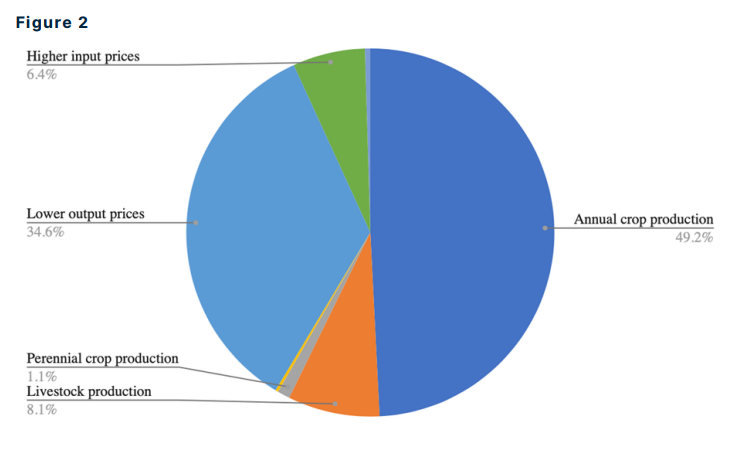China is on pace to meet its pledge to buy 12 million tons of US soybeans by the end of February, US Treasury Secretary Scott Bessent said on Wednesday, appearing…
Ukraine Ag Sector War Losses Could Top $80 Billion
Reuters reported at the beginning of October that “indirect losses in Ukraine’s key agricultural sector caused by the Russian invasion could reach $83 billion by the end of 2025, mainly due to falling harvests, the Kyiv School of Economics (KSE) said on Thursday. Ukraine is a global major grower and exporter of grain, vegetable oils and oilseeds.”
“KSE said in a report the expected sum included losses of crop production, animal husbandry, losses of producers due to export disruptions, as well as losses due to rising production costs and losses due to the need to return land to production,” Reuters reported. “‘The largest share of losses was caused by a decrease in crop production. The total indirect losses due to the reduction in crop production amount to $46.5 billion,’ it said.”

“KSE said crop production decreased both due to a decrease in sown areas and due to a change in production technology, which leads to a drop in the yield of major crops,” Reuters reported. “Ukraine’s combined grain and oilseed harvest was 107 million metric tons in 2021 but is likely to fall to around 77 million tons in 2024.”
“KSE also said that the second largest category was losses due to export disruption and they are estimated at $24.1 billion,” Reuters reported. “‘The naval blockade imposed by the Russian Federation at the beginning of the invasion, and subsequently the limited functioning of the so-called grain corridor, led to an increase in logistics costs,’ KSE said. Amid the war with Russia, the agricultural sector remains one of the main sources of export earnings for the Ukrainian economy, supplying grain, vegetable oil and oilseeds to foreign markets.”
Grain Exporting Difficulties Remain
While the ag sector remains one of the main sources of export earnings for Ukraine, difficulties exporting grain remain during the ongoing invasion, as Russia frequently targets grain ships and grain infrastructure in and around ports on rivers and in the Black Sea.
For example, Bloomberg’s Kateryna Chursina and Olesia Safronova reported on Monday that “a bulker loaded with Ukrainian grain for export was damaged during a Russian missile barrage in Odesa region over the weekend, according to the Infrastructure Ministry in Kyiv.”
“The Paresa, which sails under the flag of Saint Kitts and Nevis, had 6,000 tons of corn on board and was near one of docks at the Black Sea port of Pivdennyi when it was struck, the ministry said in a statement on its website. The ship’s 15 crew members — citizens of Egypt and Syria — were unharmed,” Chursina and Safronova reported. “The ministry published pictures showing broken glass in the wheelhouse and metal debris near loaded grain. Greece-based AK shipping, the owner of the Paresa, confirmed that the vessel had come under Russian attack. It had sailed into the port with empty holds with the specific purpose of loading grain, the firm said in an emailed statement.”
Just a few days earlier, on Oct. 2, Reuters reported that “Russian drones overnight attacked port infrastructure in Ukraine’s southern Odesa region, damaging a grain facility and buildings at a border crossing to Romania, as well as cutting power to thousands in the northern Sumy region, officials said.”
“The attack hit Ukraine’s Izmail district near the Danube river, the regional governor Oleh Kiper said on Telegram messenger,” Reuters reported. “‘Russia continues to wage war against grain and global food security,’ Oleksiy Kuleba, deputy prime minister for restoration, said on Telegram, reporting damage to the grain facility and administrative buildings at the Orlivka crossing.”





